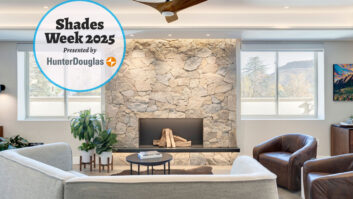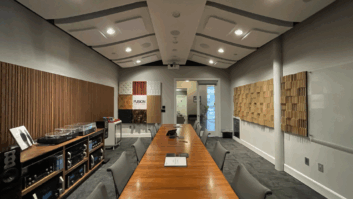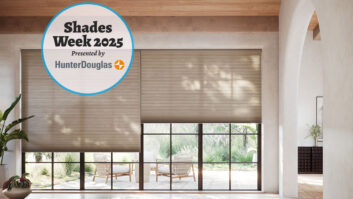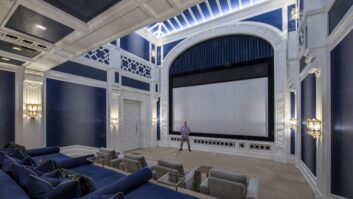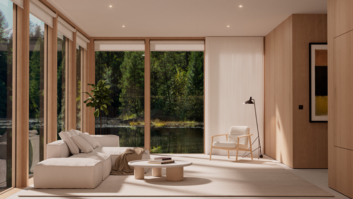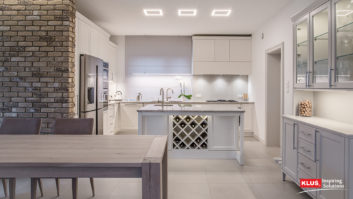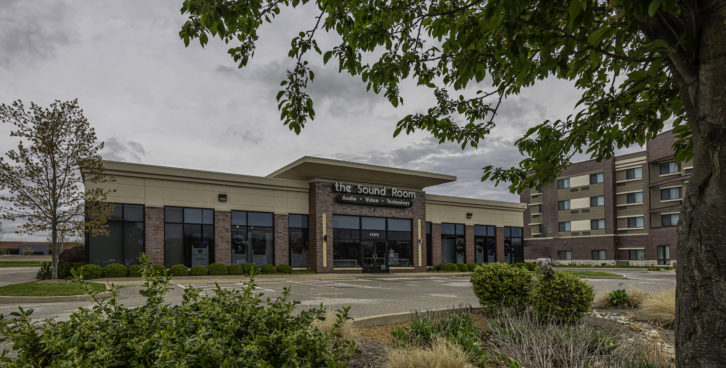
Over recent times (not the most recent times — that’s another story altogether [see sidebar below]), the debate has raged over whether or not to have a showroom. The arguments against stem from hosting a parade of “showroomers” — people who use the shop for research before they go and buy online. That, plus the proliferation of manufacturer experience centers and shop owners that use their own homes for demos, fueled the opinion that it wasn’t a necessary investment.
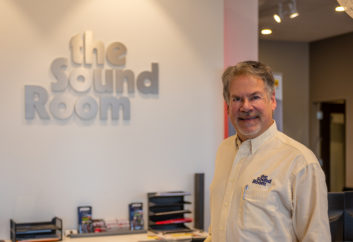
On the other side of the debate, there is David Young, owner of The Sound Room in Chesterfield, MO, a western suburb of St. Louis. Founded as an audio store by Young in 1983, it has undergone a number of changes over the decades — including expanding to multiple locations and then back down to one, albeit in a brand-new structure built from the ground up to “wow” customers by showcasing what modern audio, home theater, automation, and outdoor AV can do.
“I always felt like it was important get people to see and hear and feel and touch the products and get a great demonstration, which is something that you can’t do if you don’t have a showroom,” says Young.
Related: Showroom Strategy
Building a Better Showroom
This latest version of The Sound Room came about in 2016, when Young decided to move the shop further west than he had been, to what he calls “the Shopping Mecca of St. Louis.”
“There are two outlet malls here — I think it is the longest shopping center in the country,” says Young. “We wanted to be where everything was. There’s high-end Rolls Royce, Lamborghini, and Aston Martin dealers, as well as a Bentley dealer right next to us. There’re tons of restaurants — over 60 now. And then there’re big box stores: Best Buy, Lowes, Home Depot, Sam’s Club, Wal-Mart, and Target.”
Yes, you read that right — Young opted to place his store right in the heart of mass-market CE central. An even bolder move once you realize that The Sound Room has a large retail component to it as well (in fact, it has been named Best Specialty A/V Retailer in the United States by TWICE magazine, our sister publication).
“Back in 2012 there were a dozen audio-video retailers in our market,” says Young. “That year most them shuttered, and it basically left us and Best Buy. So what were we going to do? We could downsize and become an integration-only company that worked by appointment only. But, with our showroom area, we could upsize, which is what we did do because we were one of the only retailers left and we decided to take advantage of it and go bigger. The new store is about a third larger than our previous store — just under 11,000 feet.”
And what about sharing the same territory as your main competition?
“It’s kind of like car dealers, where they want to locate next to other car dealers because they encourage the cross shopping,” says Young. “And so do we, because we feel that if we’re given a chance with a client, we’re going to win. Our slogan is ‘same price, better advice.’ We’re not going to be undersold by Best Buy or Amazon — the products that we carry are price-protected. They’re also the brands — like Sony, Sonos, and Bose — so clients know their value.”
Young explains that high-end perception is a great way to differentiate yourself from big-box stores, but it also can scare some customers away, so he and his team designed the space to impress, but also to put customers at ease.
“Some people didn’t give us a chance because they were intimidated because we have a high-end showroom and they felt like our prices were higher than they could afford,” he says. “With the new store, when you walk in, just to put your mind at ease, we have name-brand products that everybody’s heard of, like Sony, LG, Samsung, Sonos, and Bose. They’re on display and we have pricing on everything, so people can come in and they can see brands they’re familiar with and they can see the prices because we guarantee our prices to be the same. But then, as you work your way back into the store, it becomes more and more specialized.”

Taking The Sound Room Tour
All first-time visitors to The Sound Room get a complete tour of the demo rooms, which are arranged in oval track along the perimeter of the space. And by all customers, they mean all customers — the sales team does not even ask what the customer is there to buy until after the tour. Even if you are there just to buy a cable, you’re getting the whole treatment.
The tour begins with the upfront retail section Young described earlier, plus some all-in-one systems and furniture, but then the showroom journey begins with the first of three consecutive listening rooms.
The first demo room allows comparison listening between speakers and AV receivers, including standalone and built-in speakers. Next is the mid-high room where they go to separate components from manufacturers such as Rotel, Anthem, and McIntosh, and tower speakers from B&W, Paradigm, and Golden Ear. The third listening room, which Young refers to as “the big money room,” has McIntosh separates and top-end B&W and Paradigm speakers, as well as JL Audio subwoofers.
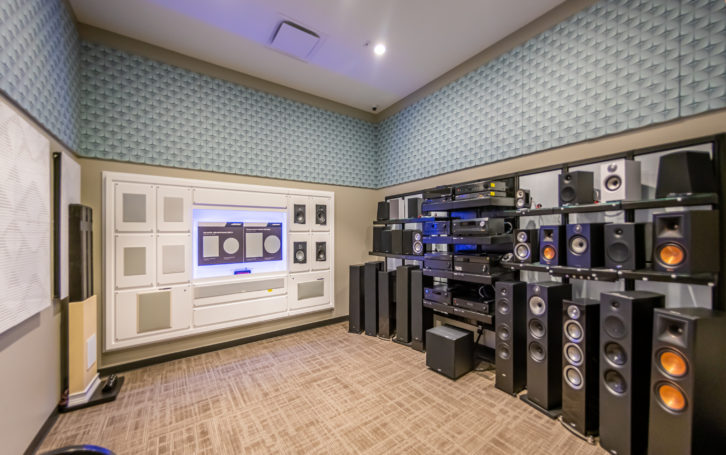
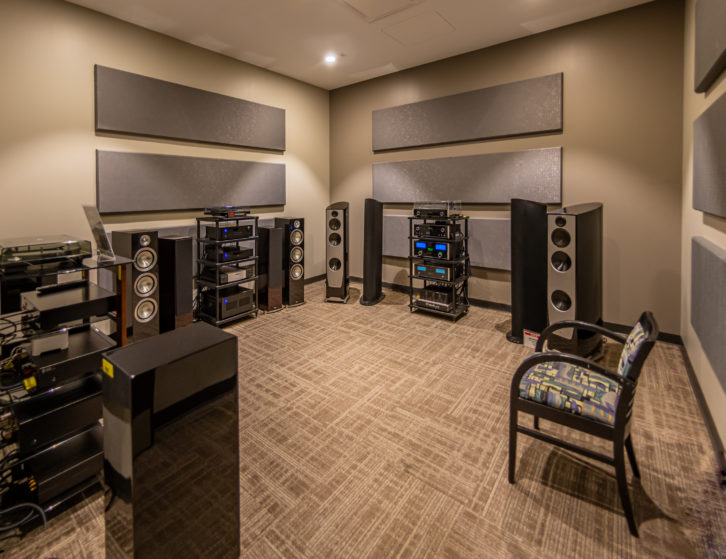
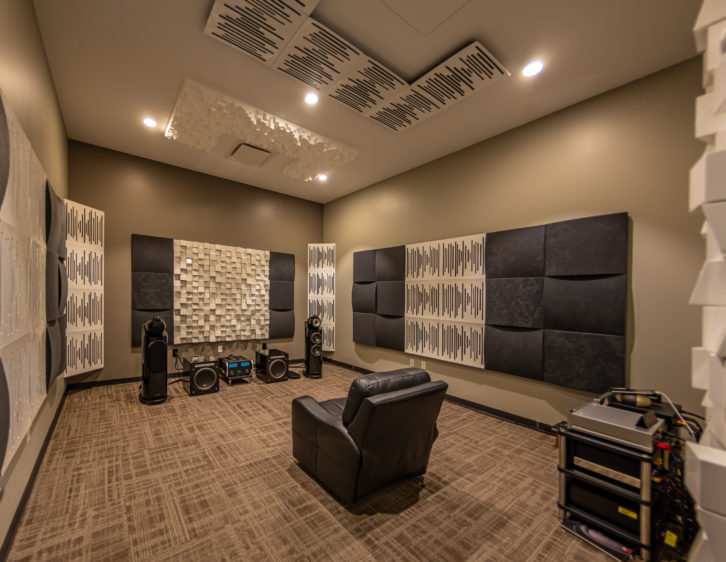
“The rooms are all acoustically treated and will knock your socks off. It gives people the experience that they’re not used to,” says Young. “That is our emphasis on audio, and we did that purposefully because we got away from audio at the old store. Everything was automation this and automation that, and we lost our roots and our passion for music. Automation is cool, but you buy it more for convenience — you buy audio and video for an emotional need, as it elicits an emotional response.”
Next up on the tour track is a dedicated home theater that features a 150-inch Screen Innovation screen and a Sony 4K laser projector with Kaleidescape providing the majority of the source material. Sound is provided through a Dolby Atmos 7.4.4 system — seven mains, four effects, and four subs. The effects and the subs can be turned off to demo a 7.4 or a 5.1 system.
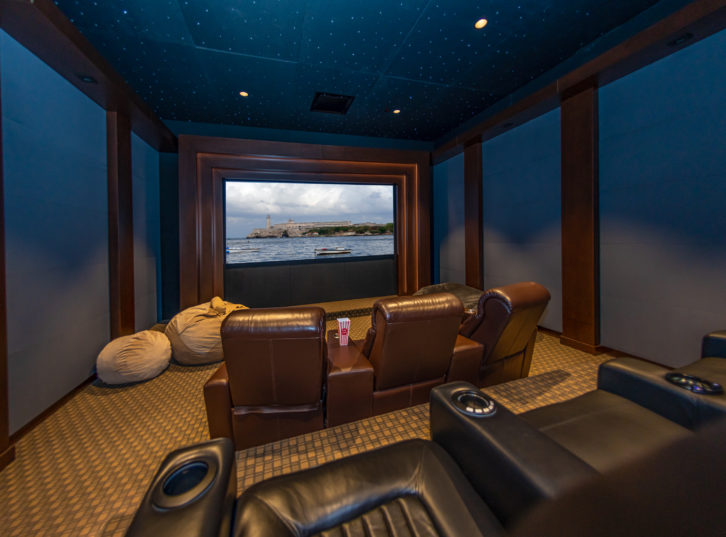
Leaving the theater, the tour continues with a wall dedicated to Control4 home automation. “It has a square vignettes with room graphics, so when you look at it, you can see that’s a bedroom, that’s a kitchen, that’s a garage,” says Young. “You can show changes in those vignettes in lighting, unlocking doors, and so on. Basically, you can show how automation works just by standing in one place.”
Which is a great introduction to the next room on the tour, the automated house. This space has a faux kitchen, dining room, den, great room, and a small starter theater, all controlled by Crestron automation. This setup features all discrete technology, including invisible speakers from Sonance and a Seura Mirror TV, with Lutron switches and keypads.
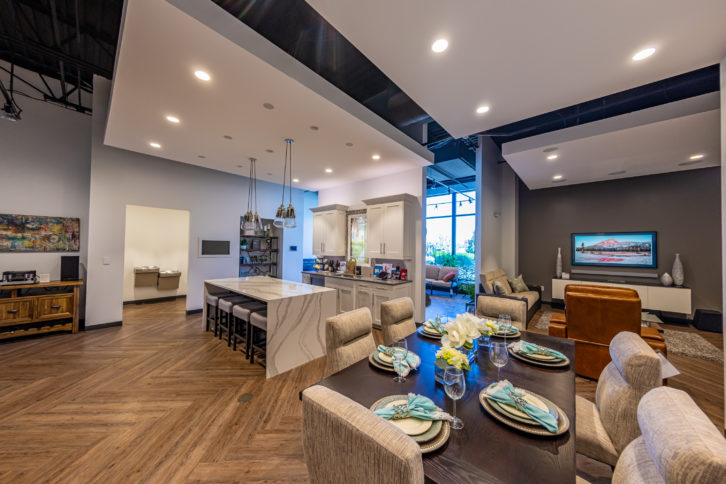
“People have this perception of what a smart house is,” says Young. “What we’re trying to tell them is, yes, you can get the Ring Doorbell and the Nest Thermostat and some lighting here and there and a lock from this company, but then you end up with kind of like the old days where you had six remote controls on the table. The automated house is basically a system that that integrates and talks to all those components, and it automates everything for you. We don’t sell smart homes — we sell automation, and we try and help distinguish what the difference is with those demos.”
Next up is a patio setup with outdoor TVs from Seura and Sunbrite, as well as under-eave models and rock speakers from Sonance, Paradigm, and B&W.
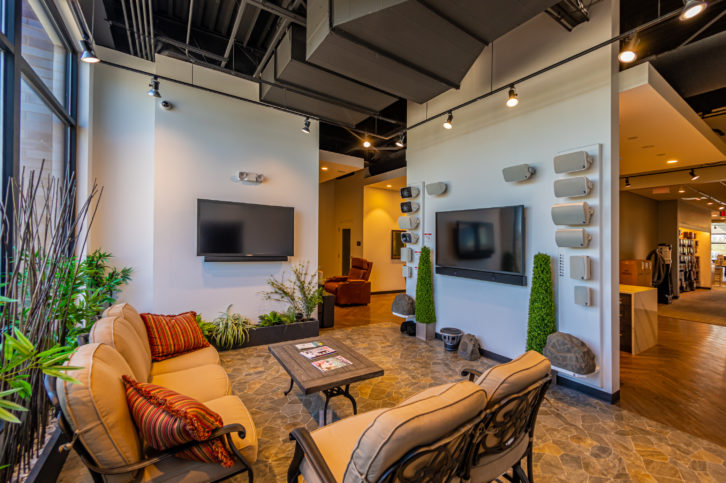
At the back of the store is a seminar room that seats around 30 and is used for classes and meetings. The room is opened up to their trade partners, so in addition to holding CEU courses, one of their builder partners holds his company meetings there as well.
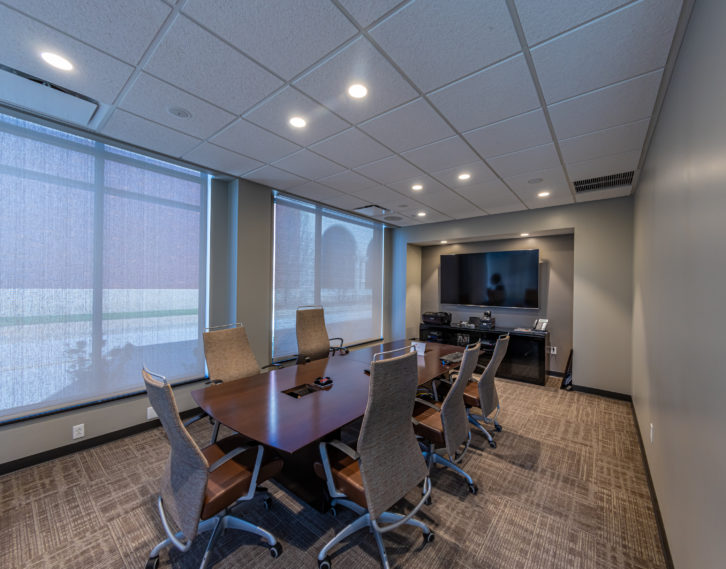
Heading back toward the front of the store, the next stop is a huddle room that they use with their new-home clients — which is a big part of their business, as they work on 600-plus new homes each year.
“We put a screenshot of their floorplan up on the screen,” says Young. “Then we build their system with them by dragging icons onto their floorplan using customized Bluebeam software. It also prices the system as we’re building it, so, at the very end of the meeting, they have a total of what they’re spending and that includes the builder markup. It also breaks it out what it would cost when you put it into a 30-year mortgage.”
The end of the tour features vignettes from brands such as B&W, Sonos, and Sony, as well as a large conference room that features a motorized screen and lighting demo, which also helps win some commercial work.
The Retail Risk and Reward
Being in business for over 30 years, Young remembers a time without the disruption of online shopping, and fully understands the risks of giving customers knowledge that they will use to buy product elsewhere. He just thinks it is a risk worth taking.
“Our prices same, but we offer better advice and service and help with help with it all,” he says. “You’re always going to lose sales. You’re going to get somebody that will take all your advice and then go online. I don’t quite understand that mentality, especially if it’s not a price issue, but that’s a fact.
“We hope that we earn people’s business by giving a good experience every time they come in and backing it up with excellent support and service.”
Showrooms During the Coronavirus
With self-isolation and, in many states, full shelter-in-place plans in effect, retail has taken a huge hit along with the other service custom installers provide. In Missouri, where The Sound Room is located, they have not been ordered to shut down as of yet, but foot traffic is dwindling down to nothing anyway.
“We still have our crews going out and doing installations in new homes,” says David Young, owner of The Sound Room. “The doors to the store are locked, but we have about half the staff coming in daily. Our hours have been cut down to 10:00 AM to 6:00 PM, closed on Sunday, and we’re taking a by-appointment-only approach and doing a lot of Go-To Meetings with the new-home customers, where we can still share the floorplans online and work with them as we would in the store.
“We practice all the CDC guidelines and keep the store cleaned and disinfected four times a day. We keep our distance — all the things that you’re supposed to do. But I see less and less people taking us up on the in-person meetings and doing the online meeting instead.”
